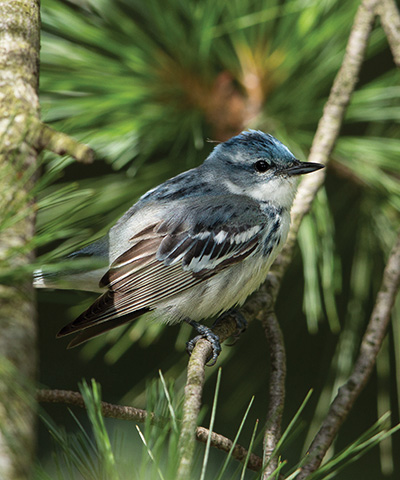April 26, 2023
Cerulean Warblers Migrate
By Brandee Coleman Gilmore
This time of year, way up in the treetops of our Litchfield Hills, small, strikingly-blue birds called Cerulean Warblers are breeding and nursing their young. Like some of our readers, these winged miracles spend their summers here before jetting off to warmer climates—in the Cerulean Warbler’s case, all the way to the eastern slopes of the Andes in South America. Their migrations are treacherous, especially during a stint across the Gulf of Mexico’s vast waters. For a host of reasons, the Cerulean Warblers’ numbers have been in a decades-long decline, but a new tool at the Sharon Audubon is part of an effort to ensure their survival. A 34-foot ‘Motus’ tower, installed last August, is part of a global network of towers receiving signals from tagged birds up to 10 miles away. Each new tower closes a gap in the migratory matrix scientists are studying about the Cerulean Warbler and other threatened species.
Another bird conservation project underway April 1 through May 31 is one anyone can join. The ‘Lights Out CT’ effort is simple—residents and businesses are asked to turn off unnecessary exterior building lights between 11 pm and 6 am. Billions of migratory birds travel through Connecticut along what’s known as the ‘Atlantic Flyway.’ They tend to do so at night, when it’s calmer and safer in the sky. However, light pollution can interfere causing the birds to crash and, all too often, die. The effort resumes during the fall peak migration from September to November.






















